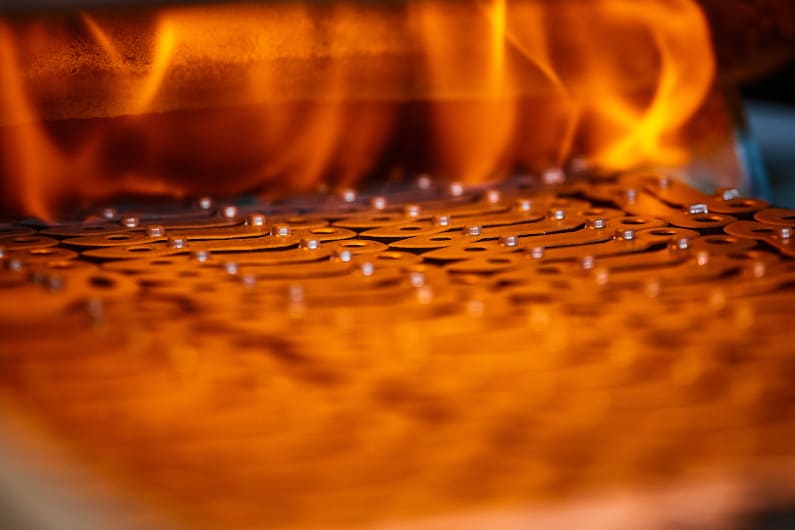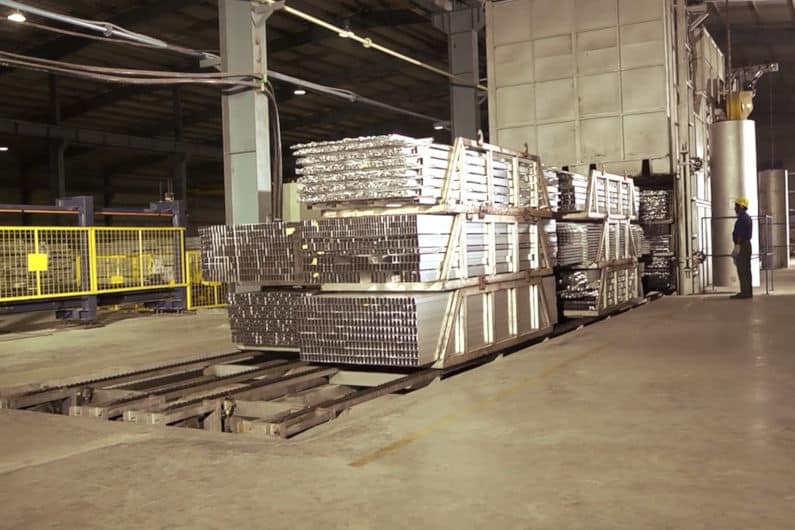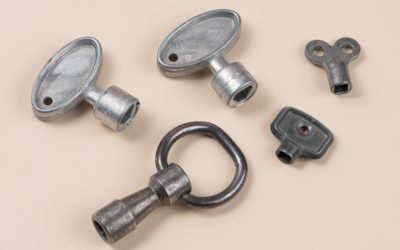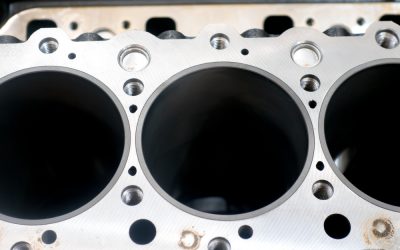Every aluminum alloy has unique physical properties that make it suitable for specific applications. And heat treatment is a tool you can use to fine-tune those properties even further.
Heat treatment involves the controlled heating and cooling of a product, in whole or in part, to change its microstructure in a specific way, ultimately affecting its properties.
You may be familiar with the heat treatment of steel — manufacturers heat the metal to very high temperatures. But aluminum has a much lower melting point and higher thermal conductivity, which significantly impacts how it can be heated.
This article will provide you with a general overview of heat treating aluminum and its alloys. It can help you decide whether heat treatment is desirable for your project.
Table of Contents
Can Aluminum be Heat Treated?

Some aluminum alloys can be heat treated, and manufacturers usually perform heat treatments to impart improved properties over the as-manufactured condition. Heat treatments can:
- Strengthen the alloy
- Increase ductility
- Improve hardness
- Relieve internal stresses
In general, you can heat treat many alloys from the following alloy series to strengthen them:
- 2XXX
- 6XXX
- 7XXX
- 8XXX
- 4XXX (Sometimes)
Chemical composition is the main reason that some alloys are heat treatable while others are not. Certain elements show greater solubility in aluminum at elevated temperatures, and their atoms can redistribute themselves effectively to form an even distribution.
Which Heat Treatments Can You Use on Aluminum Alloys? (4 Types)

This section introduces some of the most commonly used heat treatments for aluminum alloys.
1) Annealing
Annealing is a process used to counteract certain effects of cold working (working aluminum without heat). As you cold work the material, it builds up internal stresses, which increase its strength and hardness. However, this comes at the cost of ductility and formability, an effect known as work hardening.
Work hardening can be desirable for making a product stronger. However, if you subject the product to further forming processes afterward, the decreased formability can lead to cracking and ultimately scrapping of the product.
This is where annealing comes in — it helps reset the crystalline structure to relieve internal stresses and improve formability. You can then shape it effectively with lower forces, and it can withstand greater deformation before failing.
Annealing can also relieve the internal stresses in cast aluminum parts to prevent future cracking. And the process involves heating the alloy to a specific temperature, holding it there for a set amount of time, then slowly cooling it back to room temperature.
2) Solution Heat treatment
Solution heat treatment involves a similar heating process to annealing, but instead of gradual cooling to room temperature, the product is quenched. Quenching, commonly done in water, essentially “freezes” the microstructure before atoms can redistribute themselves.
After quenching the aluminum, it is capable of being hardened through aging. Quenching also provides a window that allows you to conduct further forming processes.
A solution heat treatment maximizes the concentration of the hardening alloying elements in the solid solution so that they do not precipitate out until aging has occurred.
The ideal temperature to achieve this solubility is just a couple of degrees below the alloy’s melting temperature. Because of this very narrow temperature window, very accurate furnaces have to be used to reach and maintain the required conditions.
3) Natural and Artificial Aging
Aging is a process that can happen naturally if the product has been solution heat treated. The aging process gradually increases the strength and hardness of the alloy to greater levels than those initially present.
Once the aging process begins, the alloy’s microstructure will start to lock into its final position because of the precipitation of solid solution elements.
With natural aging, most of the hardening occurs within 24 hours of the treatment, and it reaches full effectiveness after four to five days. Some alloys, however, can’t reach their maximum strength by natural aging alone because their solid solution components can’t fully precipitate.
These alloys benefit from further heating to achieve complete precipitation, although to a much lower temperature than the one used for solution heat treatment.
The process for aging at elevated temperatures is called artificial aging, also known as precipitation hardening. The alloy is heated to a specific temperature and held there for six to 24 hours before cooling back to room temperature. The result is an increase in strength and hardness at the cost of a reduction in ductility.
4) Homogenizing
The final heat treatment process, homogenizing, has the primary objective of redistributing the internal alloying elements to obtain a homogenous product chemistry. It is beneficial for castings, which solidify at different rates throughout their thickness, starting from the mold edge.
It allows elements with lower melting temperatures (pure aluminum) to solidify on the outside edges first and elements with higher melting temperatures to migrate and concentrate in the center of the casting’s walls.
If no action is taken, the product may be too soft in some places and too hard and brittle in others, making it more susceptible to failure. To homogenize an aluminum alloy, the part is heated to a point just under its melting point, and then it’s allowed to cool off slowly.
Homogenizing differs from annealing in that it is done at a much higher temperature. While annealing simply allows recrystallization through the movement of grain boundaries, homogenizing allows the migration of alloying elements as well, creating even chemistry throughout the product.
Heat Treatment and Temper: Are They Related?

You might have noticed when searching for a specific aluminum alloy that tempers are included in the nomenclature of the alloys. If you haven’t, this article will give you the basics regarding aluminum alloy temper designations.
Some of the temper designations are labeled based on the specific heat treatments mentioned before. Namely, the designations ‘O’, ‘W’, and ‘T’ disclose if the alloy has been annealed, solution heat treated, or aged, respectively.
- O = Annealed
- W = Solution heat treated
- T = Aged
While they mean different things, specific temper treatments often entail a distinct heat treatment process.
It’s a good idea to keep in mind what these temper designations mean and how these heat treatments will affect aluminum alloys when looking to use one for a project.
Conclusion
Depending on which alloy you are considering and the parameters of specific heat treatments, aluminum alloys can indeed be heat treated. You can use heat treatments to increase strength or fine-tune properties such as ductility, hardness, and even electrical conductivity.
The suitability of heat treatment for your product will depend on its final application and the manufacturing process you choose. Since heat treatment incurs additional processing costs, you should carefully evaluate whether it is necessary for your situation. Don’t hesitate to contact us at Gabrian if you need help deciding.
If you believe any of these processes may fit your manufacturing requirements, please check our Aluminum Extrusion, Die Casting, or Aluminum Rolling articles to learn more about how these aluminum forming processes work.



